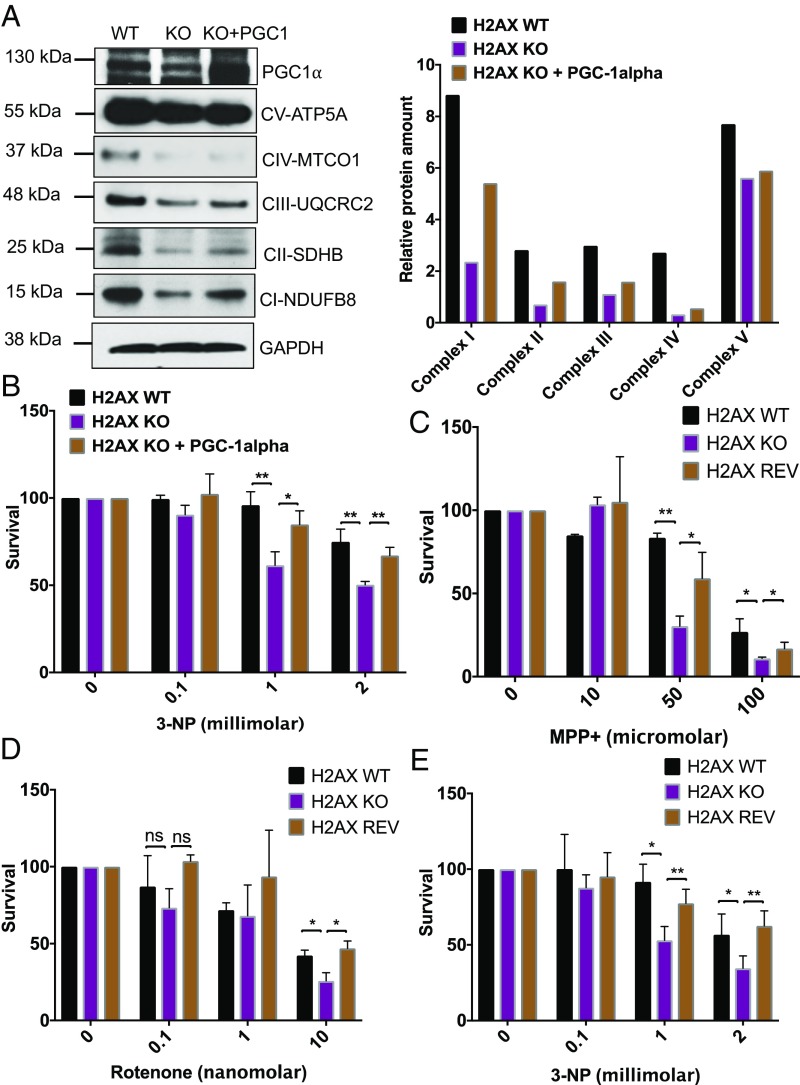Fig. 3.
Ectopic expression of PGC-1α restores OXPHOS subunits and protects from the cytotoxicity induced by mitochondrial damage. (A) Immunoblot analysis of OXPHOS subunits in H2AX wild-type cells (H2AX WT), H2AX knockout cells (H2AX KO), and H2AX knockout cells in which PGC-1α expression was ectopically and transiently restored for 48 h. Actin was used as a loading control. Both wild-type and knockout cells were transfected with control vector. Most of the subunits were partially restored, except for complex IV and complex V. (Left) Representative image. (Right) Quantification. (B) Cells deficient in H2AX are vulnerable to 3-nitropropionic acid (3-NP), an inhibitor of OXPHOS complex II. This cytotoxicity was reversed by ectopic expression of PGC-1α in H2AX knockout cells. Viable cells were quantified using 3-(4,5-dimethylthiazol-2-yl)-2,5-diphenyltetrazolium bromide (MTT) assay. Cells were treated with increasing doses of 0, 0.1, 1, and 2 mM 3-NP for 48 h before MTT was added. Data are means ± SD; n = 3. Statistical significance was determined by a two-tailed, unpaired Student’s t test. (C–E) Mitochondrial complex inhibitors induce lower survival in H2AX mutant cells, and H2AX ectopic expression mitigates these cytotoxic effects. (C and D) Parental cells (H2AX WT), H2AX knockout cells (H2AX KO), and H2AX knockout cells in which H2AX expression was restored (REV) were treated with increasing concentrations of mitochondrial complex I inhibitors 1-methyl-4-phenylpyridinium (MPP+) and rotenone. Cell survival was estimated 48 h posttreatment using MTT assay. Cells were treated with increasing doses of 0, 10, 50, and 100 μM MPP+, or with 0, 0.1, 1, and 10 nM rotenone for 48 h before MTT was added. (E) Cell vulnerability to 3-nitropropionic acid (3-NP) was analyzed using MTT assay. Cells were treated with increasing doses of 0, 0.1, 1, and 2 mM 3-NP for 48 h before MTT was added. Data are means ± SD; n = 3. Statistical significance was determined by a two-tailed, unpaired Student’s t test; *P < 0.05; **P < 0.001; ns, nonsignificant.

